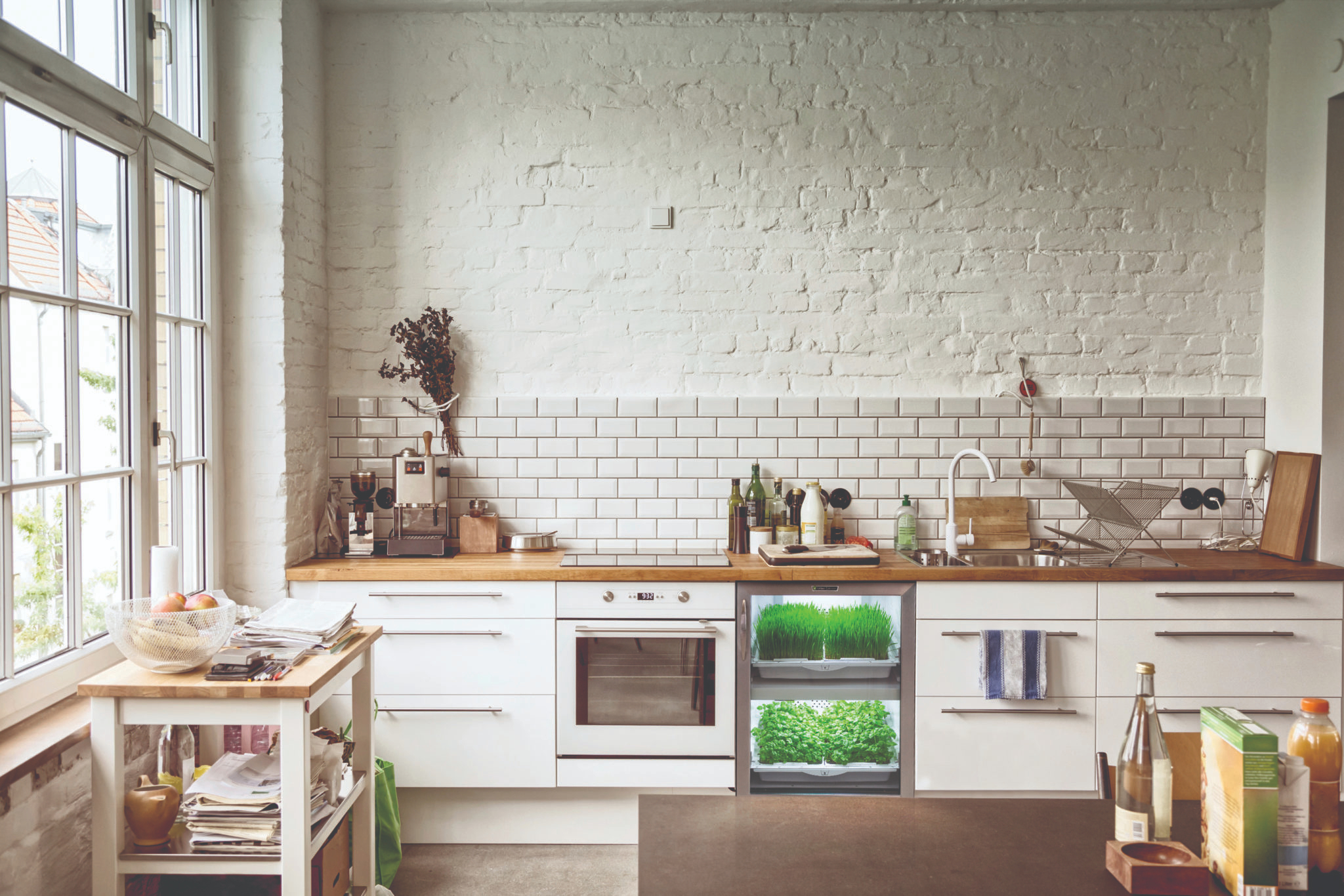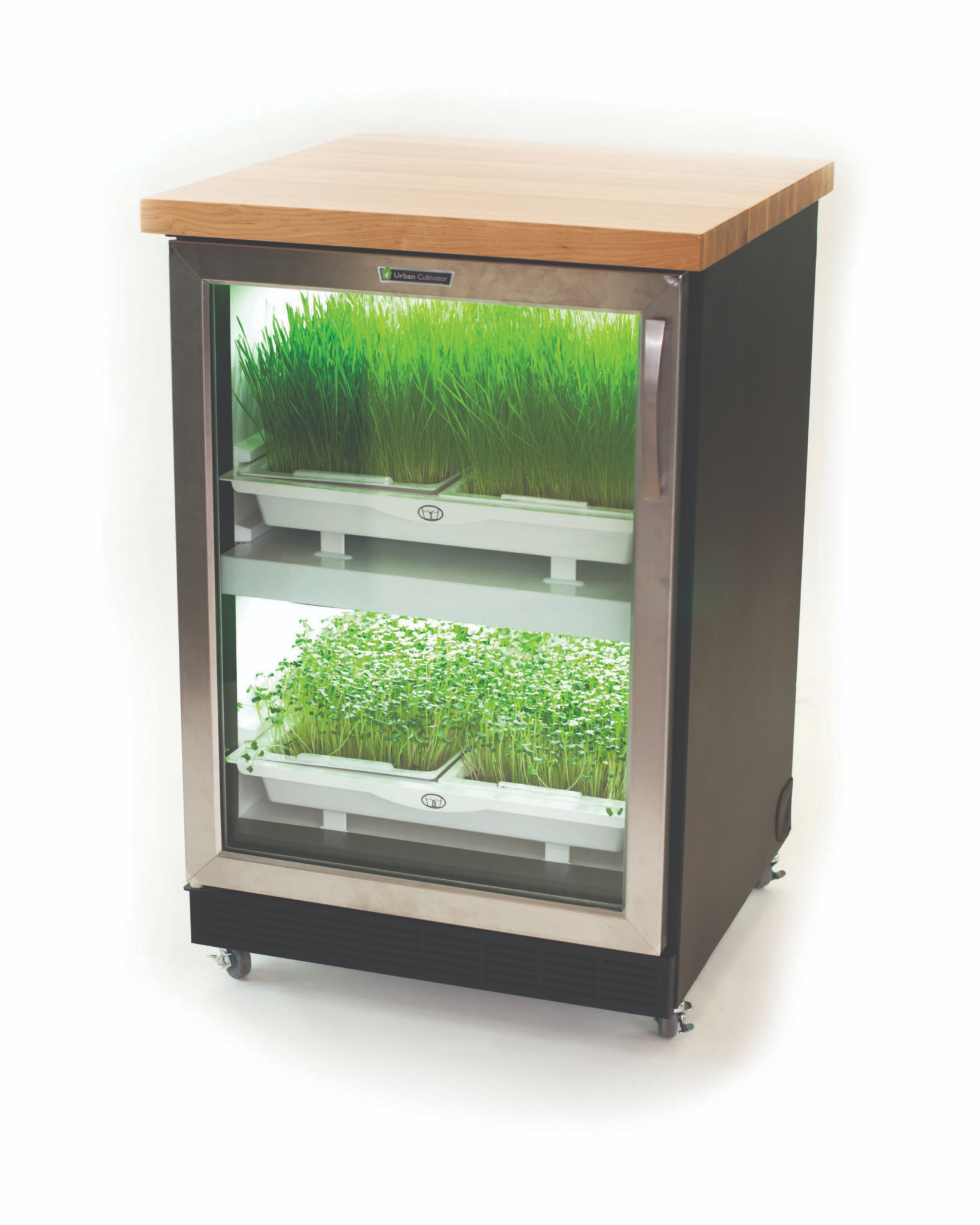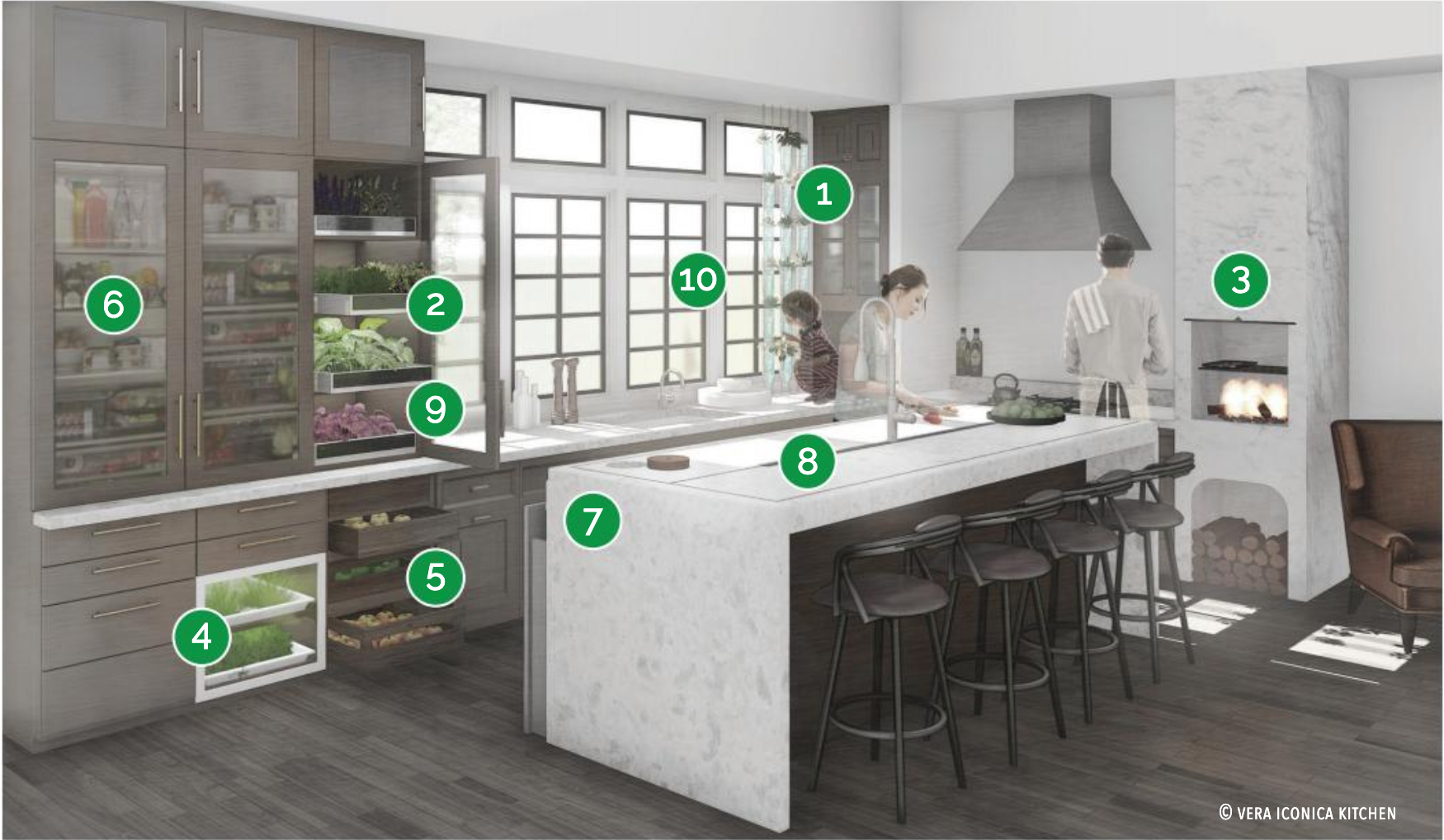
Health & Wellness in the Kitchen
By Luxury Portfolio International
Rather than being instantly propagated by viral memes, most trends gain momentum slowly, sometimes taking years to gain widespread adoption. For kitchens and residences, the first signs of change often surface in concept homes, which serve as indicators to what’s ahead in the home, design and shelter space.
These days, it’s about green, and how individuals are incorporating these features into their homes. One concept home showcased at the most recent Design and Construction Week, featured a butler’s pantry/back kitchen that included an appliance designed to grow herbs and microgreens inside the home. Another included a green wall adjacent to the kitchen to enhance air quality and provided a space to grow fresh food. With grow walls becoming more prominent in the shelter space, expect to see this trend make its way from concept homes to high-end kitchens in the near future.
The New Farm to Table
In kitchens today, health and wellness extend beyond simply buying items that are unprocessed. It incorporates preparation, storage and even in-home food production, all of which gives new meaning to the term “farm to table.”
A growing interest in organic, fresh and responsibly produced food is expected to create more change in the kitchen. It’s easy to see indications in the marketplace already. Along with the Urban Cultivator, the undercounter appliance that can grow herbs, microgreens, vegetables, and flowers, the New American Remodeled Home, showcased at the National Association of Home Builders’ last trade show, even featured gardens with fruit trees surrounding the perimeter and an artfully designed chicken coop.

From Concept to Kitchen
Greenery was also very much in evidence at last year’s EuroCucina, a biannual kitchen trade show in Milan. In part, this is a nod to biophilia, the integration of nature into interiors and designs, but several exhibitors also edged into the food production arena. In a forward-looking exhibit focused on the kitchen of the future, Electrolux featured Air Garden, a ventilation fan that incorporated space to grow herbs. Other exhibits showcased options for open shelving or floating shelves configured for plants. “We all know that plants contribute highly to our wellbeing,” says Stephanie Pierce, director of design and trends at MasterBrand Cabinets, who sees the desire to include kitchen gardens and growing food at home as an important microtrend, but one not driving the mass market.
Consumers are still reticent about the practicality of growing food at home, even though green walls and biophilic design garner quite a bit of interest. “I think it’s a micro trend, meaning it’s well-known and not something that you have to look very hard to find. But I don’t think it’s widely utilized, because there is some reservation from a lot of people about whether they have the capability to grow things,” explains Pierce.
The Urban Cultivator, which was piloted as a commercial appliance, attempts to bypass these reservations with automatic cycles for watering and grow lights — both integrated into the appliance.
Also emerging is the notion of the Wellness Kitchen, and a green kitchen is only part of the broader vision. “If you want to talk about total design in the kitchen, you have to pay attention to a lot of things, including social aspects as well as acoustics, light, water, air quality and other factors,” says Peterson.

Wellness Kitchen
- Farm-fresh produce and home-grown (i.e. in-window gardens) have no packaging to contribute to landfills.
- Reusable containers for bulk goods, as well as home delivery services reduce packaging waste that would otherwise go to landfills.
- Multiple cooking methods are nurtured and encouraged. Fire-, water-, range-type cooking within reach for added flavour, nutrients, cultural influence.
- Temperature and humidity-controlled cabinets with running water keep fresh food alive and nutrient rich.
- Cellar-like storage (dark and cool) for root vegetables, apples and other fall harvest produce allows goods to last well throughout the coming seasons.
- Visually seeing available, healthy foods tempt you to eat the fresh, nutritious options before they perish.
- Vegetable-rich diets and meals that utilize bulk ingredients lead to less waste. The trash compactor is replaced by a Fro-PostTM compacting composter that freezes food waste, mitigating unpleasant scents and encouraging cellular breakdown for easy return to the soil via backyard or community composting.
- Island is now a large prep station. Surface can be hosed down easily, and features a central trench drain and smart-edge gutters allow for easy clean up.
- Fresh, natural food has little to no preservatives, thereby ensuring vitality and promoting good health.
- Lots of natural daylight filters into space, ideal for supporting window garden systems and healthy circadian rhythms.
For more on Luxury Portfolio International, visit www.luxuryportfolio.com

